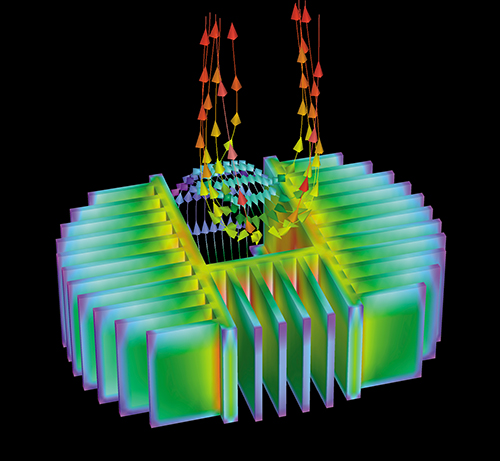Designing Cool Components
A group of computer designers needs to design a high-speed personal computer enclosure. In the computer designing business, high speed means high heat, delivering a challenge to any thermal engineer. The computer components need to be placed in a small envelope, leaving few placement options for heat-dissipating mechanisms and fans. Add a requirement for super-quiet operation to the order, as well as an accelerated production schedule, and designers will be facing a headache in thermal design. How do engineers overcome these hurdles?
Daat Research Corporation's Coolit® could be just the solution. Partially derived from software developed for designing combustion systems and material processing, Coolit began with funding from NASA's Glenn Research Center under a Small Business Innovation Research (SBIR) contract. The software can provide a variety of solutions to thermal engineering challenges. The software is a unique computational fluid dynamics (CFD) application for addressing thermal and cooling design problems.
In a small enclosure, slight changes in component placement, fan size, and vent location can have a major impact on thermal performance. To analyze the influence of these modifications, engineers traditionally use a cumbersome process that involves prototype building, testing, modifying, and retesting. If a company is under pressure to quickly design and produce a computer component enclosure that can deliver fast and efficient performance, the engineers would need to eliminate some of the standard prototype-building steps. Coolit has the capability of solving this type of dilemma by giving the engineering firm the ability to trade physical models for virtual ones and turn invisible thermal and flow conditions into visible patterns.
Coolit provides accurate three-dimensional representations of the thermofluid environment. The product to be evaluated can be "sketched" on a computer screen, using components from the extensive Coolit built-in library of electronic devices, fans, vents, and heat sinks, just to name a few. Once the geometry is specified, the user can access an online library to identify material properties, such as thermal conductivity for heat-transmitting components. Color-coded surfaces and components show temperature variations, making hot spots easily identifiable. Arrows indicate airflow and heat-flow paths and their intensities. The color-coded surfaces and arrows can be overlaid, giving the user an overall view of the interaction between airflow and temperature, creating a clear picture of the internal conditions of the product.
Dr. Arik Dvinsky, president of Daat Research, notes that, "As electronic products continue to shrink in size and increase in power, adequate thermal management has become an important element in product reliability. Software modeling of alternative designs reduces the time and effort invested in prototype building and testing, contributes to improved design, and helps optimize component characteristics and layout."
Coolit® is a registered trademark of Daat Research Corporation.

Daat Research Corporation’s Coolit® provides accurate three-dimensional representations of an electronic component’s thermofluid environment.













